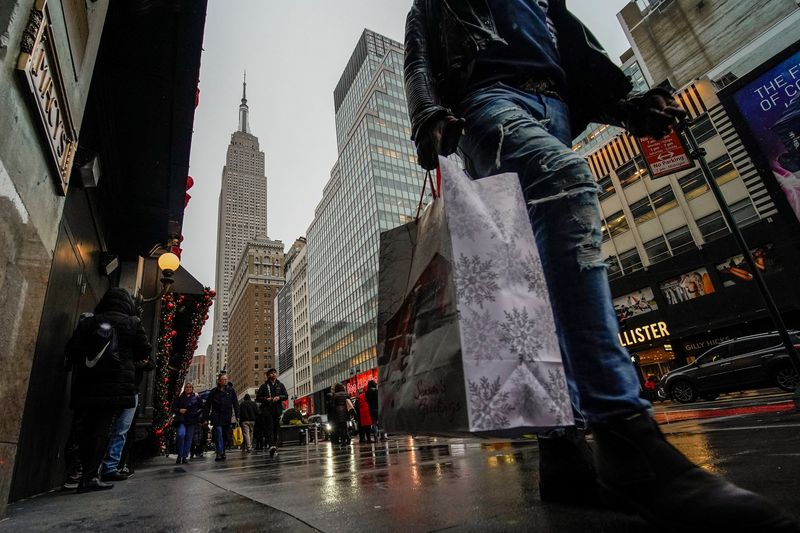By Siddharth Cavale
NEW YORK (Reuters) - Top executives and major law enforcement agencies in the U.S. are fretting about organized crime rings targeting retailers' stores and trucks for goods they can resell online.
Gangs of thieves coordinate to steal many millions of dollars of merchandise - often perfume, cosmetics, toiletries or power drills.
They then resell the goods on the black market, generally at online auction sites, flea markets, to other retailers or even to third-party merchants on major e-commerce marketplaces such as Amazon.com (NASDAQ:AMZN) and Walmart (NYSE:WMT).com.
Unlike amateur theft or spontaneous shoplifting by people with little to no pre-meditation, "organized retail crime" entails careful planning, deliberate targeting of retailers, and high-level coordination among perpetrators.
The crime ring generally has two parts - those individuals who steal large quantities of merchandise from a number of stores, and those who convert the stolen goods into cash.
Walmart and Amazon have started posting messages on their websites asking shoppers to report suspected stolen goods offered for sale, in line with a new law that went into effect on June 27.
WHY IS IT GROWING?
In the 1980s, police identified groups of shoplifters stealing goods not for personal consumption, but with the aim of reselling them in large quantities on the black market.
Once concentrated in pawn shops and bodegas, today organized retail crime is a "multi-billion-dollar problem", said Jason Brewer, senior vice president of communications and marketing at the Retail Industry Leaders Association.
"Goods can be sold through an online marketplace anywhere in the world," he said.
Trade group RILA says organized retail crime cost U.S. retailers nearly $70 billion in 2020. According to Brewer, retailers say it has "gotten exponentially worse" since the COVID-19 pandemic, when stores were short of staff to monitor store shelves.
Organized gangs have also taken advantage of store policies that bar employees from engaging during a robbery or theft.
While most retailers do not list that guidance on their websites for fear of people taking advantage of the policy, executives including Lululemon's CEO have come under fire for letting go of employees who have tried to stop shoplifters.
WHO FOOTS THE BILL FOR IT?
When retailers face high costs, their profit margins take a hit and they typically look to raise prices for shoppers.
That means that, in the end, shoppers may bear the cost of retailers' losses to organized retail crime, Walmart CEO Doug McMillon said in December.
Target (NYSE:TGT), Dollar Tree (NASDAQ:DLTR), Foot Locker (NYSE:FL) and Ulta Beauty (NASDAQ:ULTA) have all disclosed recently that organized retail crime is a problem at their stores.
RILA's tally counts the value of merchandise lost to all retail crime, which includes employee theft, regular shoplifting and fraud.
But it doesn't include the hundreds of millions of dollars spent by states such as Illinois, Colorado, Connecticut, Washington and California, where law enforcement has set up special task forces to fight organized retail crime.
California alone has invested more than $241.4 million over the past year bolstering law enforcement efforts to investigate and prevent organized retail theft.
Operation Overload, a year-long investigation by the California Highway Patrol, led to the recovery of $50 million in stolen goods - TVs, laptops, microwaves, cars, makeup and clothing, from brands including Samsung (KS:005930), HiSense and Hurley.
The stolen goods were kept in storage units and houses. As of May, the cops were still investigating who the owners of the stolen goods were.
CVS and Home Depot (NYSE:HD) were involved in the investigation, according to RILA, indicating that they were two of the chains from which criminals stole the goods.
WHAT ARE RETAILERS DOING ABOUT IT?
In addition to working with law enforcement agencies, retailers are putting up plexiglass cases and steel cables to lock down merchandise, and adding security and large alarm systems to their stores.
Ulta said in May that perfumes were one of its most targeted products for theft. It will have locked display cases in 70% of its stores by the end of the year.
Dollar Tree is considering taking frequently targeted items, such as men's underwear, out of stores given the increase in theft across all the retailer's locations.
It is also putting commonly stolen items like cigarettes and deodorant behind cash registers in some stores.
Home Depot is using "human and technology resources" to make theft in stores more difficult, Evelyn Forbes, senior manager of public affairs, told Reuters.
Some of its most stolen items are wire and wiring devices, power tools, and home automation products, she said.
